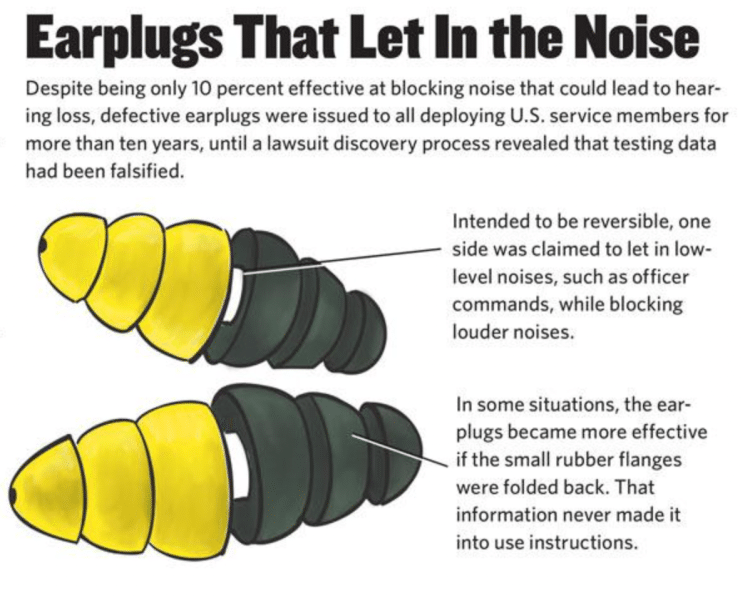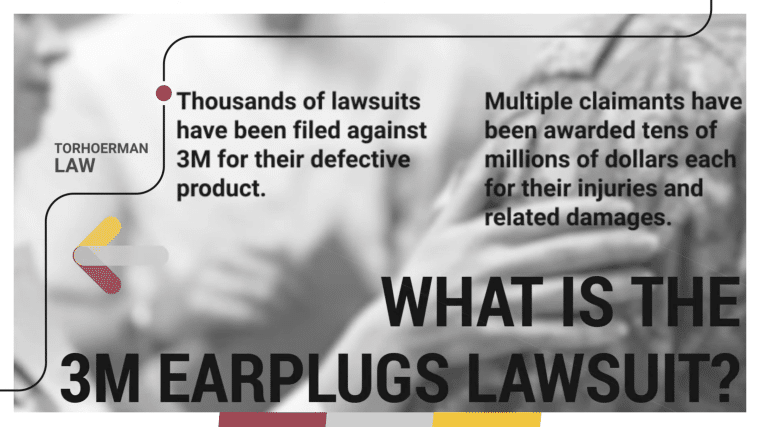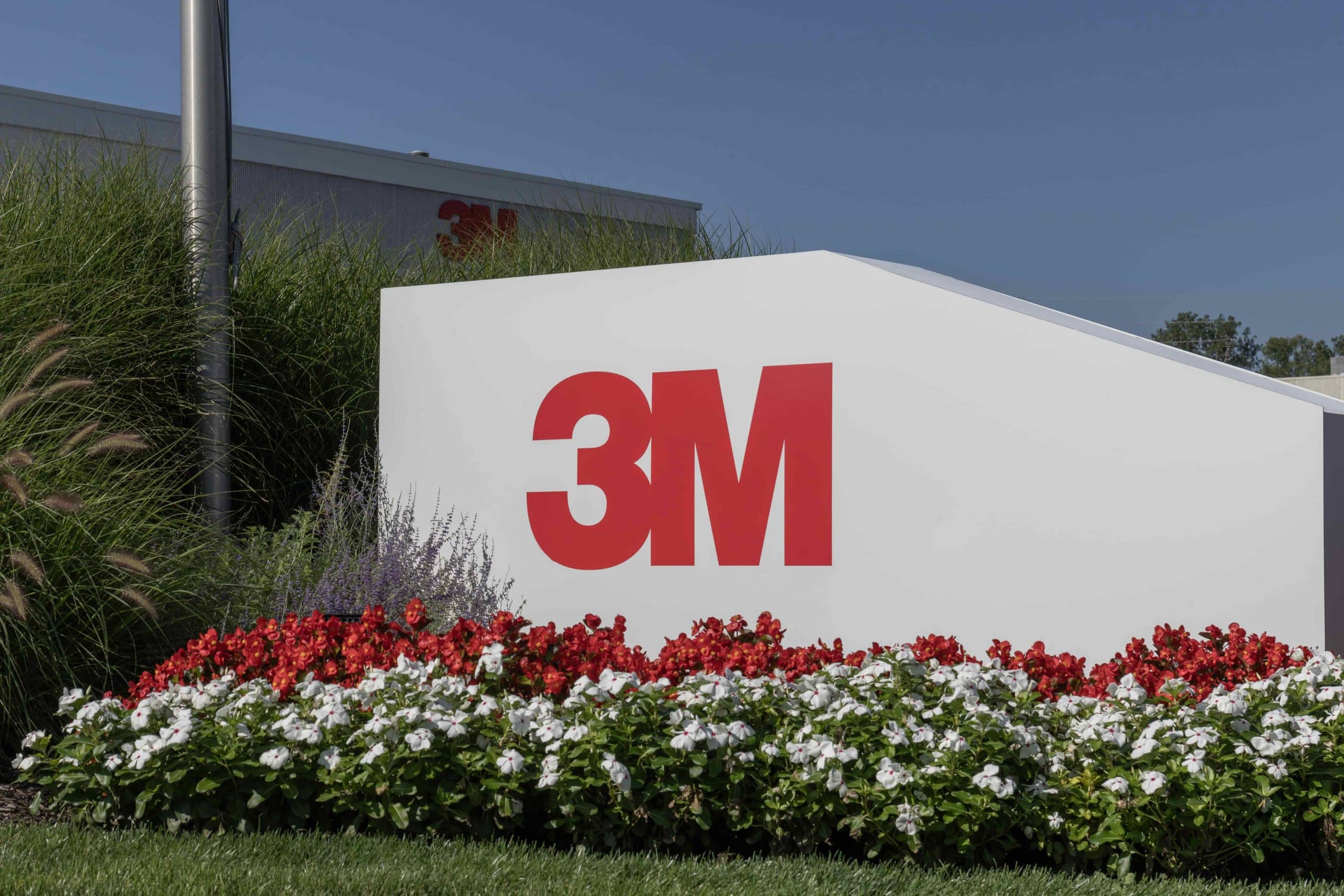The multinational conglomerate 3M regularly makes use of branding that positions itself as a manufacturer of rugged products that promote worker safety in harsh environments. The news that its Combat Arms Earplugs were defective, however, immediately caused a stir among service members and their families.
The resulting 3M earplug lawsuit and mass tort settlement between the company and vets has garnered quite a bit of attention, given its monetary value and its impact on those affected by the faulty products. Thousands of members of the armed forces have suffered hearing loss due to the flawed equipment.
On that note, below is everything you need to know about the 3M earplug lawsuit and its massive $6 billion settlement.
Background of the 3M Earplug Controversy
To understand the gravity of the case, it’s important to know a little about the history behind the earplugs in question. The original developer of the Combat Arms Earplugs (version 2), Aearo Technologies, was acquired by 3M in 2008.
Aearo’s earplugs were made to be reversible. Users could put them in one way to allow quieter sounds in while blocking harmful noises, or they could choose to flip them around to block out or reduce all noise. The problem is that they were allegedly defective, allowing in far more noise than those initial claims. On top of that, proper usage tips never made it into the instructions.

Many veterans claimed the earplugs did not maintain a proper seal in their ears and now argue that the defect led to permanent hearing loss or tinnitus (ringing in the ears). Hundreds of thousands of US service members participated in the mass tort litigation.
Bryan Aylstock of Aylstock, Witkin, Kreis, & Overholtze has become the primary counsel. However, there are dozens of attorneys involved in the case. Ayltstock and attorneys representing other claimants formally initiated litigation in 2018.
Details of the $6 Billion 3M Earplug Settlement Payments
Military service members and 3M reached a $6 billion settlement that will spread its payments from 2023 to 2029. The settlement originally included both cash payments and 3M stock contributions, though the company now wants to make cash payments only.

The Master Settlement Agreement (MSA) outlined phased deadlines for each group. The MSA I final registration date was March 25, 2024. Eligible claimants will receive compensation based on the severity of their injuries.
The federal judge also ordered the establishment of an extraordinary injury fund (EIF) for veterans who suffered the most severe damages. Additionally, a deferred payment program has been set up for certain claimants.
While it is unusual for the courts to allow for a deferred payment program, it can happen, especially when settlements involve billions of dollars. The deferral process gives the defendant time to accumulate the required funds and file appeals or other legal actions. The NFL, for instance, recently had a $4.7 billion lawsuit overturned after initially delaying its payments.
Mass Tort vs Class Action
Other than its use of deferred payments, the most notable detail about the 3M case is that it is a mass tort, not a traditional class action suit. Both mass torts and class action claims involve multiple plaintiffs who file a unified lawsuit based on similar circumstances or facts. The differences between the two kinds of cases become apparent after they are filed.
Class action lawsuits combine the entire claim into a single action, whereas mass torts consolidate pre-trial proceedings (like the discovery process) to make the case more efficient. However, each plaintiff must prove their specific damages and injuries.
Class action settlements also pay a small sum to each eligible person. The per-person settlement amount may be fixed or variable, depending on the circumstances and the quality of each person’s evidence.
Ongoing cases against Amazon and Google are prime examples of class action suits. If the plaintiffs win, the compensation they each receive will be relatively small. It wouldn’t make sense for them to file individual claims, as the attorney’s fees would greatly outweigh any recovery.
The 3M lawsuit is different in that some participants suffered catastrophic injuries and are therefore eligible for significant settlements. However, litigating each case individually would create a backlog and delay each person’s ability to settle. Since many of the underlying details of the case are the same across each plaintiff (the product was defective), a mass tort was the most pragmatic option.
Who’s Eligible?
Veterans who served in the US military from 2003 to 2015 may be eligible to participate in the formal recovery processes. You must have used the Combat Arms Earplugs during that time frame and suffered some form of hearing loss or damage.
The settlement data administrator, BrownGreer, plays a key role in ensuring all claims are properly handled. They are responsible for collecting and maintaining records of all the settlement registrations, ensuring that eligible veterans submit the correct documentation and are included in the settlement. Additionally, as general settlement administrators, they will also oversee the distribution of settlement funds over the multi-year period mentioned earlier.
Legal Proceedings and Challenges
The 3M case got very messy before a settlement was eventually reached. Here’s a look at some of the unusual twists and turns that came up in the multi-year litigation:
3M and Aearo Get Tossed Out of Bankruptcy Court
In 2023, 3M and Aearo attempted to file for bankruptcy to resolve approximately 260,000 pending claims associated with the defective earplugs. Fortunately for the thousands of veterans affected by the defective product, federal judge Jeffrey Graham tossed out the bankruptcy plea, claiming that the companies enjoy a “greater degree of financial security than warrants bankruptcy protection.”
Judge Graham further elaborated on his decision, stating that the lawsuits did not create any impending risks of insolvency and that there was no evidence a settlement couldn’t be reached. Nevertheless, the cases against 3M are staggering. At the time of Graham’s ruling, earplug litigation against 3M represented 30% of all cases pending in federal district courts.
The SEC Settles With 3M
The Securities and Exchange Commission (SEC) was also involved in a settlement with 3M on the tail end of the earplug settlement process. Officials charged 3M with violating the Foreign Corrupt Practices Act (FCPA) and reached a $6.5 million settlement to resolve the case.
Judge Rodgers Blocks Predatory Litigation Funding
One of the most surprising twists came from Judge Casey Rodgers, the federal judge overseeing the $6 billion settlement claims. According to Reuters, Judge Rodgers (in late 2023) blocked plaintiffs’ lawyers in the 3M case from participating in litigation funding programs that offer high-interest cash advances.
These programs are often viewed as predatory, and apparently, Judge Rodgers shares these sentiments. Here’s how they work:
- A plaintiff presents evidence claiming they are due a payout from a proposed settlement
- The funding firm provides them with a high-interest cash advance
- When the plaintiff receives the funds, they have to repay the advance, plus interest
There are lots of ways that these deals could go wrong. If the settlement falls through or gets overturned, the plaintiff is stuck with high-interest debt. Even delays in payments could become burdensome to plaintiffs, as they would have to start making payments once the grace period ends.
3M’s Response and Financial Impact
3M has denied any wrongdoing from day one, claiming that the earplugs were effective when used correctly. Despite these claims, the company agreed to the settlement to avoid the costs of continued litigation.
The settlement not only represents a huge financial hit for the company, but it has also led to a significant loss of brand equity and reputation since then. 3M and other defense suppliers will likely face stricter regulations when it comes to product safety.
Implications for Veterans and the Military Community
For the many service members who have struggled with hearing loss and tinnitus for years, the 3M settlement represents a long-awaited resolution and a moment of relief. At the same time, it highlights the broader issues related to the safety of military equipment.
The Department of Defense and manufacturers will need to collaborate more closely to ensure that future protective gear meets higher safety standards. The case could serve as a catalyst for improvements in military equipment that reduce the risk of similar injuries in the future.
Criticisms and Concerns
Some argue that the $6 billion does not adequately compensate the thousands of veterans affected. Given the life-altering nature of hearing loss and tinnitus, critics believe that 3M should have been required to pay more.
There are also concerns about the claims process itself. Ensuring that all claimants receive fair and timely compensation represents a huge hurdle. The claim period ranges from 2003 to 2015, and 3M will be paying settlements through 2029, 26 years after the start of the claim period.
It’s also important to note that scammers and other bad actors have targeted veterans participating in the settlement, calling them and requesting that they verify their dates of birth and Social Security numbers to confirm participation. The incident was reported to the Federal Bureau of Investigation, which then launched an analysis into the fraud and identity theft attempts.
Other Landmark Lawsuits
The 3M earplug lawsuit represents one of the largest in history, primarily impacting members of the US Military and their loved ones. Other major cases that could have implications for you as a consumer involve the following brands:
Costco
The discount grocer and big box store Costco is facing a class action lawsuit over its use of per- and poly-fluoroalkyl substances (PFAS), known colloquially as “forever chemicals,” in its Kirkland Signature Baby Wipes. Plaintiffs only recently initiated the claims process, so it could be months before we learn more about the status and validity of the case.
Poppi
The new class action claims against the “healthy” soda brand might lead to compensation if you’ve purchased a can in the last few years. Plaintiffs argue that the company used misleading advertising strategies and deceptive tactics to trick them into thinking the probiotic soda was good for their digestive systems.
JUUL
JUUL reached a $300 million settlement in response to claims of deceptive marketing practices, user injuries, and a variety of other grievances. The company finally got its products back on store shelves, but it faces an uphill battle back to profitability.
What’s Next in the Settlement Process?
Payments from the 3M settlement will continue to be distributed over the next few years. Some claimants still have an opportunity to appeal, which could delay the distribution of funds or alter some aspects of the case.
Why You Need to Be Aware of Class Action Claims
Even if you aren’t a military veteran or eligible claimant in the 3M case, it’s important to keep up with how it and similar legal actions turn out. Each mass tort and class action settlement could have a direct impact on your experiences as a consumer.
There are millions in unclaimed dollars from class action settlements. If you are eligible to participate in a claim, it’s important to submit a formal request by the set deadline so you can do your part to hold big businesses accountable. And even if you miss the initial filing deadline, you may have a chance to obtain just compensation.
